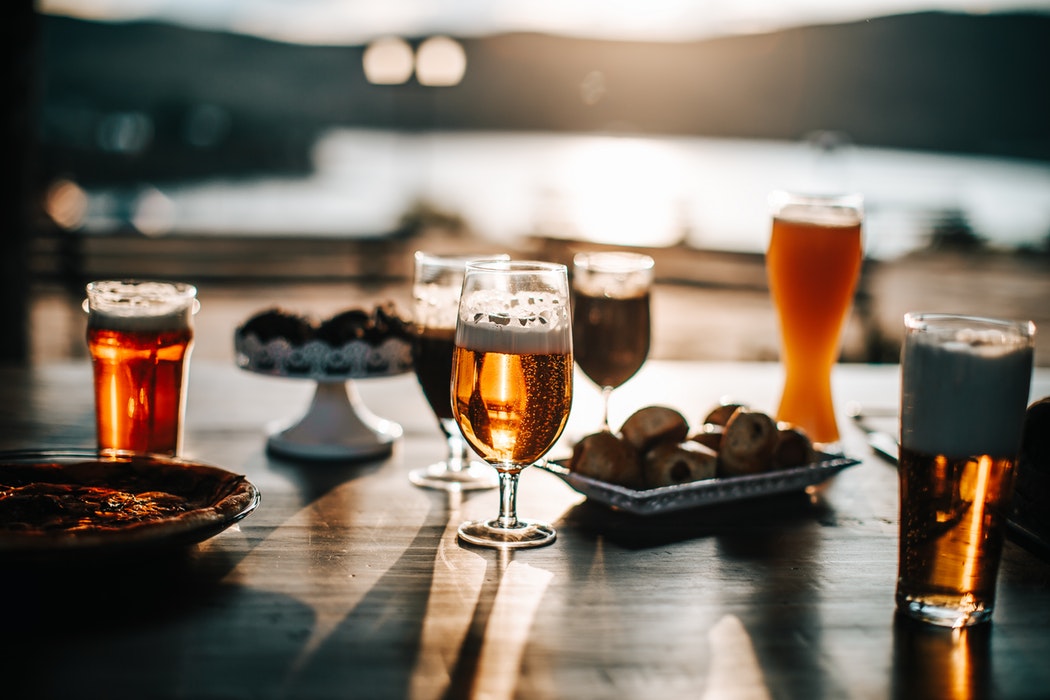Books & Culture
The New National Literature of Canada Is Being Written by Women
The most important voices in Canadian lit are the ones that have historically been silenced

As an American-born literature scholar and writer who became a permanent resident of Canada last year, I’ve spent a lot of time recently wondering how to differentiate between American literature and Canadian literature. Growing up in the 1980s, I saw these two nations as not just contiguous but porous, and they were; back then, my mother and I would drive over the Canadian border for day trips, without passports or any form of identification. (The one time a border officer spared a glance for anyone inside the car was when we were accompanied by her Iranian grad student. “Are you American?” the officer asked. The student nodded, and we were ushered back into the U.S.) We are all painfully aware that borders are being tightened around the world. In this climate of hard stops and blocked-off countries, then, is it any easier to discern the traits of a national literature?
Pinpointing the quiddity of one is tricky, but if I had to do so, I would argue that Canadian literature has traditionally been concerned with negotiating the tension between tightly-knit communities and vast expanses of space. The idea of who is part of the group—and even more importantly, who is not—has always been central to that negotiation. Yet we see this tension in American literature too, and it’s worth remembering that one of the novels speaking most strongly to our current moment in the United States is The Handmaid’s Tale by Canadian author Margaret Atwood.
In this climate of blocked-off countries, has it become easier to discern the traits of a national literature?
However, in this newly partitioned North America, a more definitive Canadian literature seems to be emerging. Based on my recent reading, one aspect of it is noteworthy: The women are talking.
Up until a couple of years ago , my exposure to Canadian lit was largely limited to Margaret Atwood, Alice Munro, Michael Ondaatje, and Robertson Davies. Atwood, of course, has proven to be a protean predictor of our future as a species and as readers. When Munro’s Nobel Prize was announced, I was thrilled that the committee was honoring an author who spent her life chronicling small-town women and girls. Davies’ Deptford Trilogy presents academia as a raucous hero’s journey—part Rabelaisian, part Jungian. Ondaatje’s The English Patient is one of the supplest historical novels and meditations on identity that I know. In the works of these authors, the story is often about who controls the story, who gets to speak, how stories throw up their own borders and desires. Like the texts of many national literatures, they probe contested or attenuated authorship and the dangers of repressed language and memories.
I still love all of these writers, but as I put my ear to the ground of my adopted country, I long for new voices—indigenous authors, writers of color, women speaking to experiences hidden from common view. Recent books by Katherena Vermette, Tanya Tagaq, Esi Edugyan, Sheila Heti, and Miriam Toews have fed this urge and suggested to me that one quality intrinsic to Canadian literature, at least in its most recent iteration, may be its emphasis on women’s speech and the act of listening.
Before I settled in Canada, I was ignorant of residential schools and the damage they wrought. From the mid-nineteenth century until the last one closed in 1996, First Nations children were torn from their families and communities, and placed in government-run residential schools for the purpose of “assimilation.” The mortality rate and frequency of all kinds of abuse in them were obscene. From 1928 to 1972 in some provinces, legislation even allowed residential schools to sterilize any child in their care.
Vermette’s The Break and Tagaq’s Split Tooth both reckon with this toxic legacy and transgenerational trauma. The Break, which was published in 2016 in Canada and last year in the United States, is a chamber piece for a tortured orchestra, with each chapter narrated by a different character from one community. Its central mystery is a horrific crime: a Métis teenage girl (someone of mixed indigenous and European ancestry) is sexually assaulted, glass found inside her afterward. As the novel unfolds, the various strands of the story knit more closely together. Women of all ages who at first seemed disparate are shown to either be related by blood or to have played roles in each other’s lives, with the daughter of a woman who was impregnated through rape perpetrating abuse in turn. The novel pivots on the motif of assembly in its content as well as its form. In one scene, a character reflects on how she pieced together the story of her mother’s death in an alley: “Stella learned all the facts. She gathered them like bits of debris and glued them together as if they could stick again.” A different character says of her sister, “She was stitched back together, but there was always a scar.” Narrative, in this context, is one of the few ways to bind torn bodies, memories, psyches, and histories. Vermette, who is herself of Métis descent, doesn’t explicitly discuss residential schools, yet the structure of her novel enacts their great crime of ripping apart communities; the female characters who might be able to heal if they communicated with each other are severed by chapter breaks. Only the reader hears the full story.
Narrative, in this context, is one of the few ways to bind torn bodies, memories, psyches, and histories.
By contrast, Tagaq’s Split Tooth indicts residential schools in the fiercest terms. Fitting for a woman best known for her otherworldly throat singing, Tagaq, who is Inuit, screams at the sky with this story. It is more an unleashing than a traditional novel, a long wail of Arctic magic realism. Its protagonist is ravished by the northern lights and destined to suffer for souls in hell, but her trials are softened by love and tenderness. Interwoven throughout are songs and odes in prose to the landscape of Nunavut, the largest, northernmost Canadian province and where Tagaq grew up: “the air is so clean you can smell the difference between smooth rock and jagged.” The book’s natural refrains advocate for listening not just to other women but to the landscape itself, which according to recent reports is under attack as much as any of us, with Canada warming at twice the global rate.
This sentiment finds good company in the bestselling, award-winning Washington Black, written by Esi Edugyan, who lives a stone’s throw from where I teach in Colwood on Vancouver Island. The daughter of immigrants from Ghana, Edugyan’s cinematic novel starts on a nineteenth-century slave plantation in Barbados before traversing the world. There is even a dreamlike stop in northern Canada, where Tagaq’s characters would feel at home. In one extraordinary scene, the hero encounters an octopus underwater:
“When I came forward to touch it, it sent out a surge of dark ink. We paused, watching each other, the grey rag of ink hanging between us. Then it shot off through the water, stopping short to radiate like a cloth set afire, its arms unfurling and vibrating. There was something playful in its pause, as if it expected me to ink it back.”
This interspecies communication is its own form of listening; if we cannot convey our truths through human speech, we must observe one another closely. Throughout the book, in fact, Edugyan demonstrates how human dignity can be reclaimed by paying close attention to the natural world. Similar to Split Tooth, it espouses a poetics of extreme vigilance, of listening with all the senses, not just the ears.
Other Canadian authors focus on the importance of listening to ourselves. Across the country, in Toronto, Sheila Heti harkens to her mind and attempts to divine her future in Motherhood, an inventive memoir that questions not just whether she wants to have a child but whether it’s possible for a childless woman to mother the world. One of the surprises of Motherhood is that it ends up being as much about Heti’s relationship with her own mother, a successful doctor who skimped on time with her children, as it is about her decision of whether or not to conceive. Heti muses:
“Is attention soul? If I pay attention to my mother’s sorrow, does that give it soul? If I pay attention to her unhappiness—if I put it into words, transform it, and make it into something new—can I be like the alchemists, turning lead into gold? If I sell this book, I will get back gold in return. . .When the gold comes in, I will go to my mother’s doorstep, and I will hand it to her and say: Here is your sadness, turned into gold.”
Interrogating her motivations and choices, Heti flips coins in a version of fortune-telling based on the I Ching; how the coins land determines whether the answer is yes or no. The answers are sometimes heartrending, sometimes hilarious:
“Is there a male equivalent to this, well, barrenness?
no
Is there a romantic female figure that equals those male, romantic, artistic figures?
yes
Women artists with children?
yes
If I have children, will I be like those women?
no”
Despite the question hanging over its project and the hundreds of queries that alight from its pages like a fleet of balloons full of hot air, the book crackles with insistence—the insistence that living with honesty is about asking the right questions and listening for the answer without expectations or preconceptions.
Playful and searching, Motherhood is a philosophical inquiry into personal freedom. In this one respect, it echoes Miriam Toews’ Women Talking, which was published last year in Canada and just came out in the U.S. Before I moved to Canada, I’d never heard of Toews, but she’s a national treasure here, based on anecdotal and other evidence; when I was out in public reading Women Talking, several women came up to me to enthuse about it and say they’d read all her books. With a recent glowing profile in The New Yorker and this unsettling, gorgeous, timely novel, Toews seems poised to get the recognition she deserves across the border as well. Though it draws on real-life crimes in Bolivia, where women and girls as young as three were drugged and raped at night by the men of their remote Mennonite community, Women Talking is a joyful novel. It is not a police procedural; it doesn’t dwell on the crimes. But neither does it shrink from the terrible violence and trauma these women have endured. We as readers bear witness not to their suffering—which, necessarily, was always postponed, belladonna having rendered them unconscious during their attacks—but to their excruciating yet exhilarating seizure of agency, as they debate whether to stay in the colony or flee.
Reviewers have rightfully compared Women Talking to a play, given its chorus of voices and the predominance of reported dialogue, but there are strains of the epistolary novel in it too. The narrator, August Epp—who is nearly as disempowered as any female in the community, and a mess besides—is taking the minutes of a secret debate between the Mennonite women, but his confessions and interjections read at times like a diary. His notes of the women’s conversation are interpretation as much as faithful record:
“A translation note: The women are speaking in Plautdietsch, or Low German, the only language they know, and the language spoken by all members of the Molotschna Colony . . . I mention this to explain that before I can transcribe the minutes of the meetings I must translate (quickly, in my mind) what the women are saying into English, so that it may be written down.”
As powerful a statement as women’s speech can be, when their spoken words are written down, something is always lost in translation.
The novel’s chorus builds to a piercing aria at its end. It should not be forgotten that Toews’ novel, which celebrates female articulation, is narrated by a man, and his epiphanies swell the final pages. Epp’s lyrical supernova speaks for the women of his community, yet his words are not appropriation but grace—for the women, for those left behind, and for August most of all. He realizes that Ona, the woman with whom he has been in love all his life, asked him to record their words not because she and the women need to remember them but because he needs to listen. This should have been obvious to him from the beginning, given that the women won’t be able to read his words in English. But the revelation, and what it hints at, is still glorious. That is, women talking can save not just themselves through this transgressive and liberating act, but everyone around them.
The book’s natural refrains advocate for listening not just to other women but to the landscape itself
At the close of Women Talking, August considers, as he writes a list of things for the youth of Molotschna to cherish, that the word “list” derives from an old word for “desire.” But used in another way, its origins link back to “borders.” The words “list” and “listen” are also connected etymologically. Within this quasi-list, then, my desire to discern literary borders and truly listen to and through these Canadian women’s texts finds its natural expression. But as I trip along those borders, I caution myself. Women are talking in Canadian literature, yes, but we still need to make an effort to hear what they’re saying.








